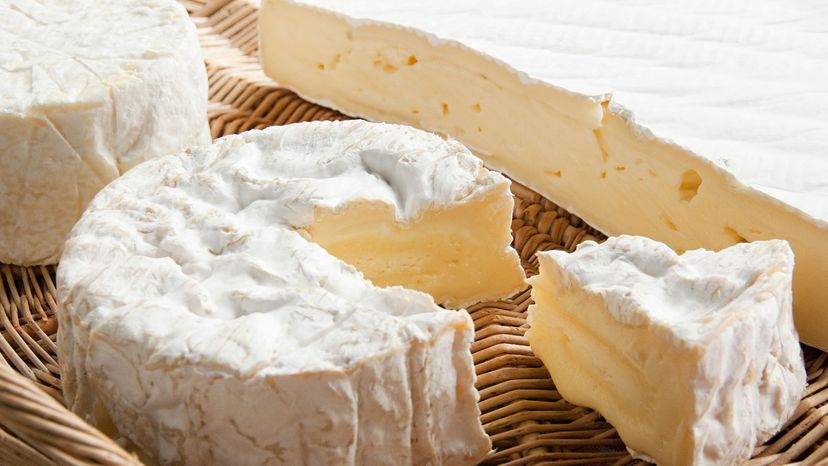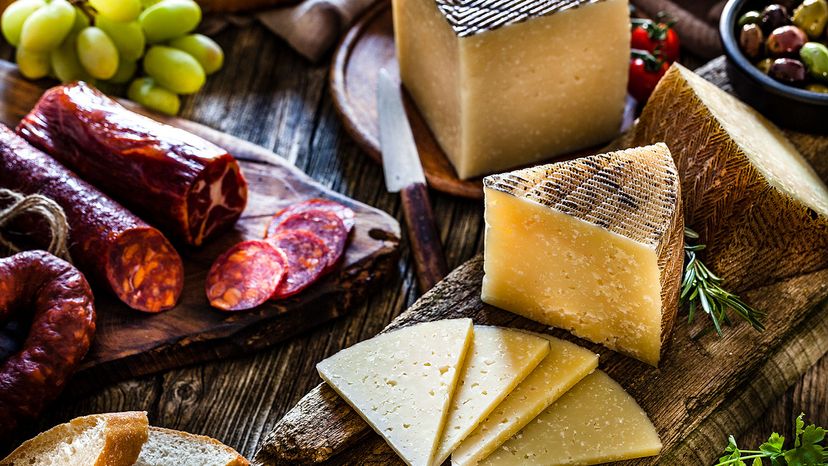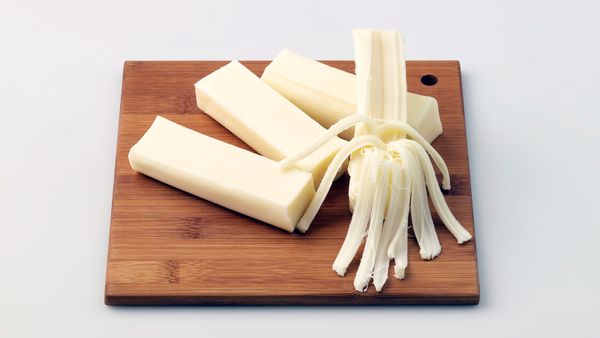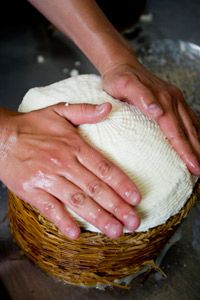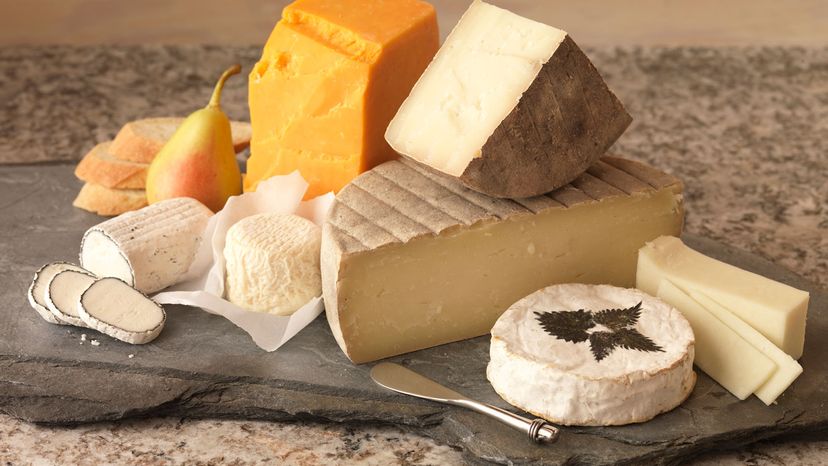
Cheese is one of the happiest accidents of food history, likely discovered when an enterprising herdsman decided to store some fresh milk in a pouch made from a sheep's stomach and later opened it to find the liquid transformed into curds of fatty goodness (along with some whey to drink). In ruminant animals like cows and sheep, the fourth stomach is home to rennet, a naturally occurring enzyme that curdles milk, separating it into solid curds and liquid whey.
To make cheese, all you really need are three ingredients: milk, salt and live microbial cultures including rennet. The specific strains of microbes added to the milk play an important role in giving each variety of cheese its distinct flavor. When you mix those three ingredients together, the rennet immediately goes to work curdling the milk. Simply drain off the whey, pack together the curds and you've got cheese!
Advertisement
Well, technically speaking, the process described above is how you would make a fresh cheese like cottage cheese, queso fresco or ricotta. But thanks to centuries of cheesemaking experimentation and innovation, there are dozens of varieties of different cheeses on the market, each with its own unique taste, texture and stink factor.
If you've ever felt overwhelmed by the exhaustive selection of cheese at your local supermarket or cheesemonger, we're here to help.
First, it's important to know that cheese can be classified in any number of different ways. These include:
- texture (soft, semi-soft, hard)
- flavor (mild, sharp, extra sharp)
- age
- preparation method (unripened, mold-ripened, bacteria-ripened)
- type of milk used (cow, goat, sheep, buffalo)
- color
- country
- region
To keep things simple, we're going to follow the lead of Marcella Wright, certified cheese professional and the popular cheese blogger behind Marcella the Cheesemonger. Wright divides cheese into eight major families (with some cheeses appearing in multiple categories) covering just about every cheese you'll find at a grocery store.
Advertisement
